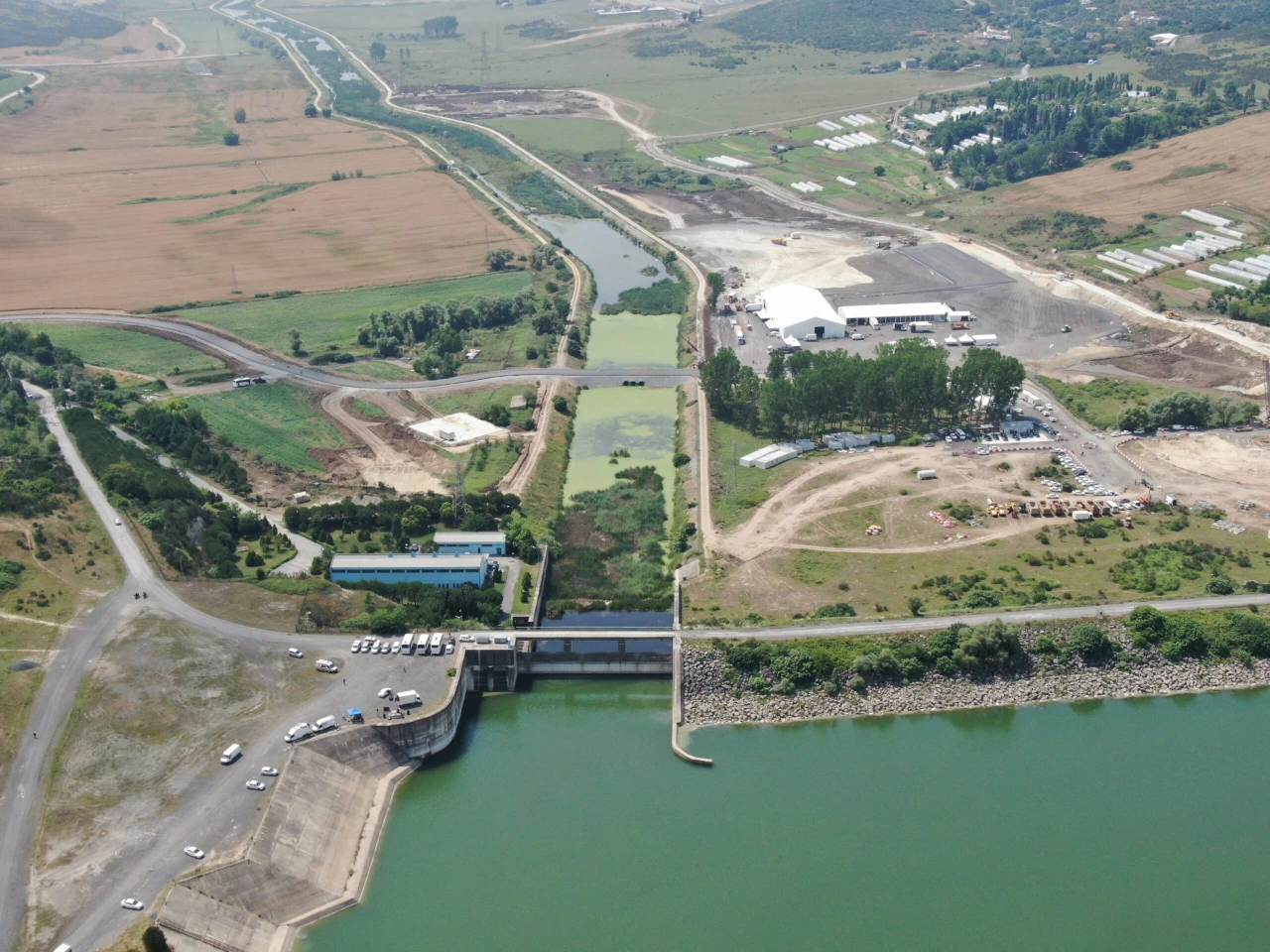2,000-year-old aqueducts unearthed in Türkiye’s Tyana
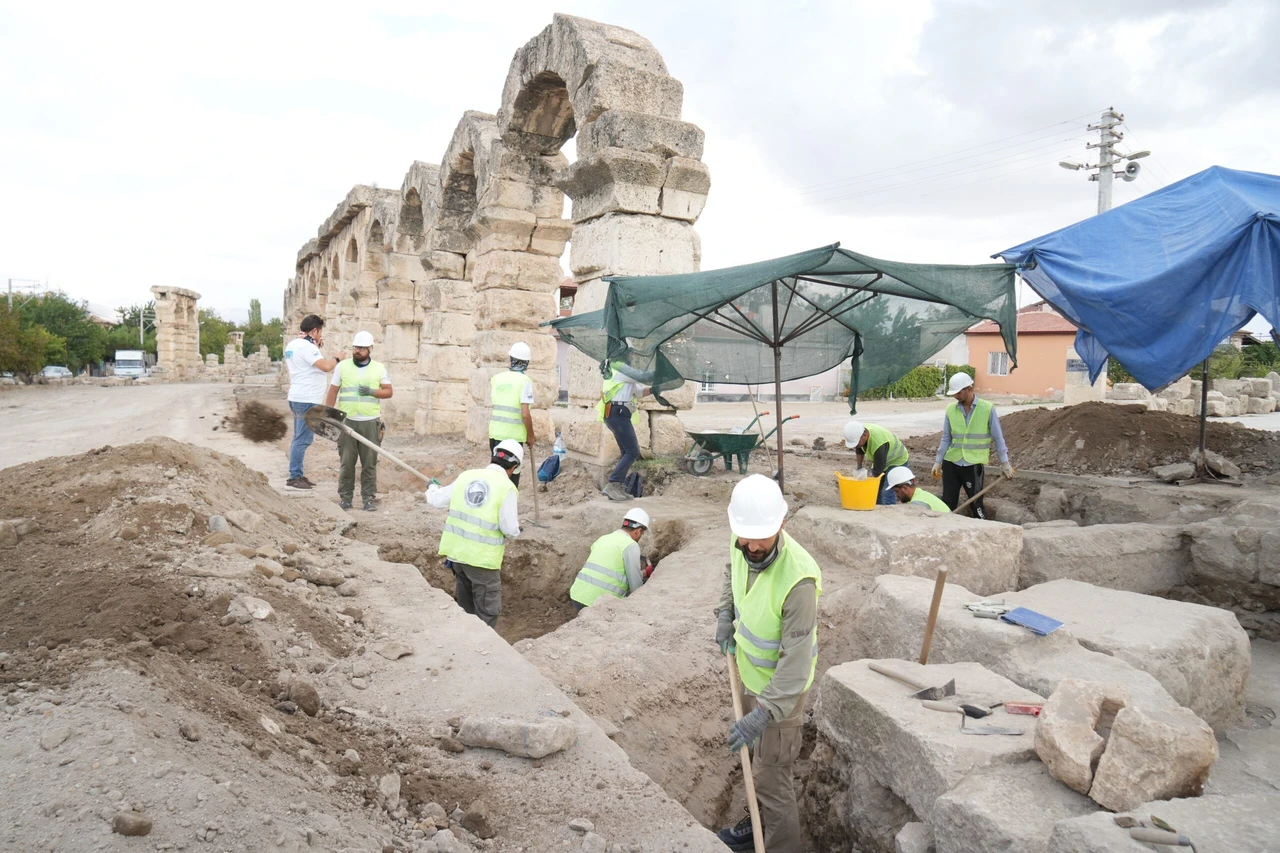 The buried sections of approximately 2,000-year-old aqueducts in Kemerhisar, located in the Bor district of Nigde, are being uncovered through ongoing archaeological excavations, Türkiye, September 23, 2024 (IHA Photo)
The buried sections of approximately 2,000-year-old aqueducts in Kemerhisar, located in the Bor district of Nigde, are being uncovered through ongoing archaeological excavations, Türkiye, September 23, 2024 (IHA Photo)
Excavations in Kemerhisar, a town in Bor, Nigde, are uncovering parts of nearly 2,000-year-old aqueducts that had been buried beneath layers of soil. These significant archaeological efforts aim to restore the aqueducts, bringing the forgotten grandeur of Tyana ancient city back to life.
Located in an archaeological conservation zone, Kemerhisar was known as Tuwanuva during the Hittite period and Tyana during the Roman era. The aqueducts, stretching 3-4 kilometers and standing 10-11 meters high, were built in the Roman period to transport water from a spring near the Ancient Roman Pool in Bahceli to the city of Tyana. The sections of these monumental aqueducts that have been buried for centuries are now being painstakingly unearthed, restoring the city’s former glory.
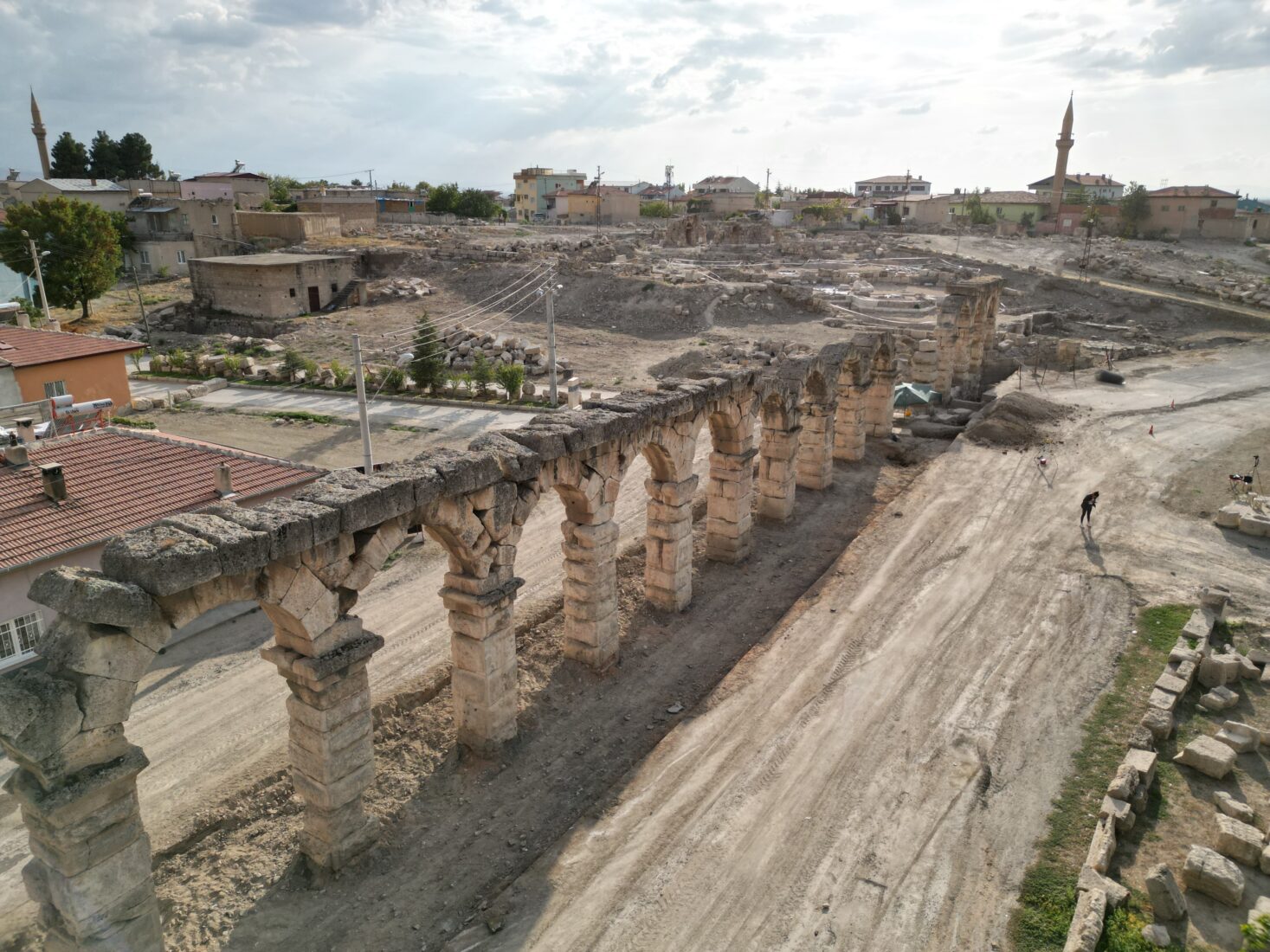
Professor Osman Doganay, head of the excavation team and faculty member of Aksaray University’s Archaeology Department, emphasized the significance of Tyana, stating, “Tyana Ancient City is a strong candidate to become the Ephesus of Central Anatolia. It holds a crucial position as the first ancient city accessible after Gulek Pass, making it a key settlement for over 5,000 years. The current Kemerhisar Municipality is built directly on top of the ancient city.”
Doganay added, “We initiated archaeological excavations in 2016 with permission from the Ministry of Culture and Tourism, and since 2021, the work has continued under a presidential decree, allowing us to carry out year-round excavations. Our 2024 goal is to open the aqueduct pathway for public visits as part of the Ministry of Culture and Tourism’s ‘Legacy for the Future’ project. This involves both the excavation and restoration of the aqueducts, along with landscaping around the site.”
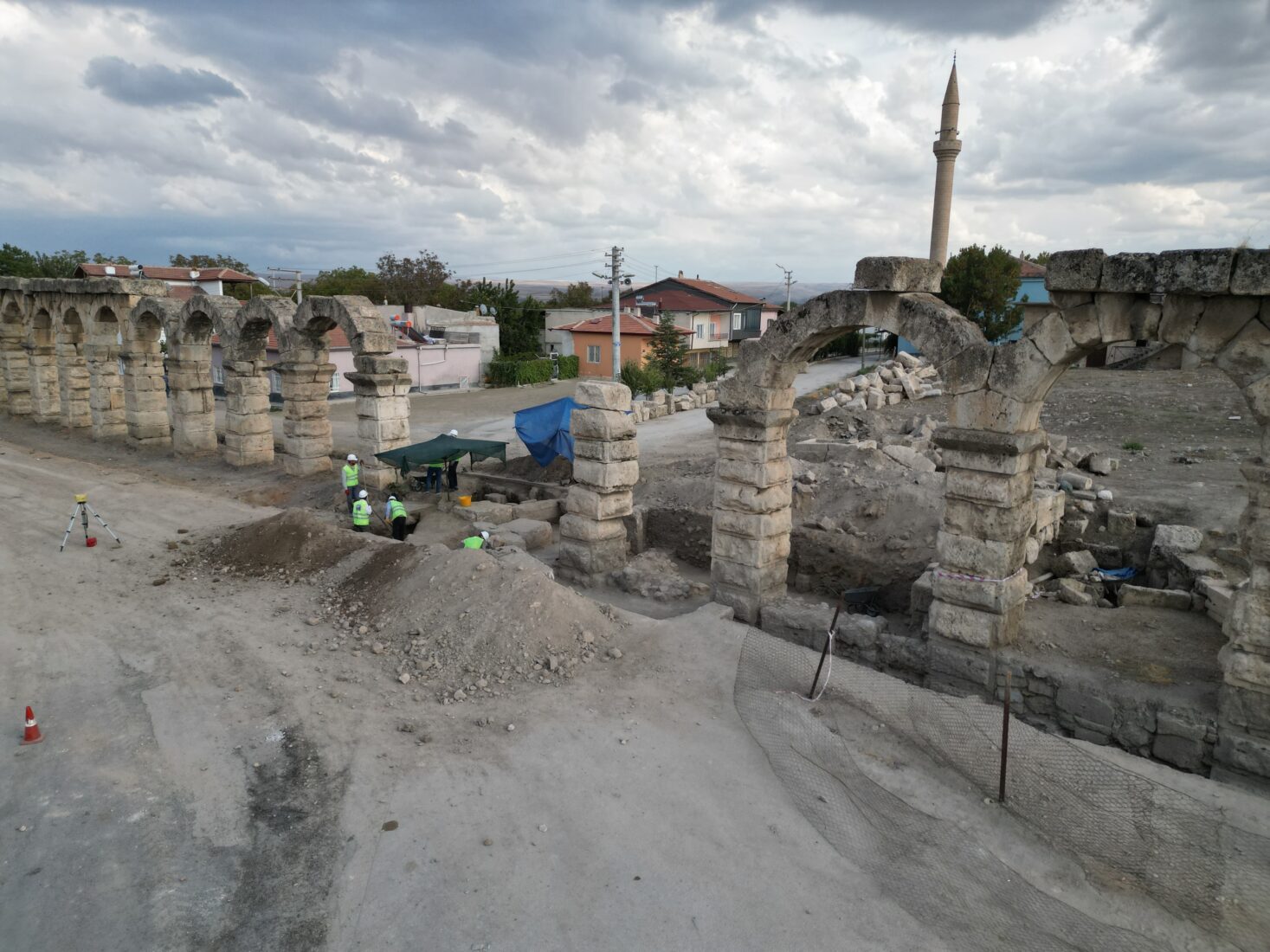
Aqueducts submerged beneath sediment
Excavations have revealed that sections of the aqueducts were submerged beneath approximately 3.5 meters of sediment caused by historic flooding.
Doganay explained, “The aqueducts were originally 10-11 meters high when built, with their majestic facades fully visible. Alongside them, earlier Hellenistic defensive walls could also be seen. However, over time, 4 meters of flood deposits buried these structures. Our excavations aim to reveal the aqueducts’ full, impressive form.”
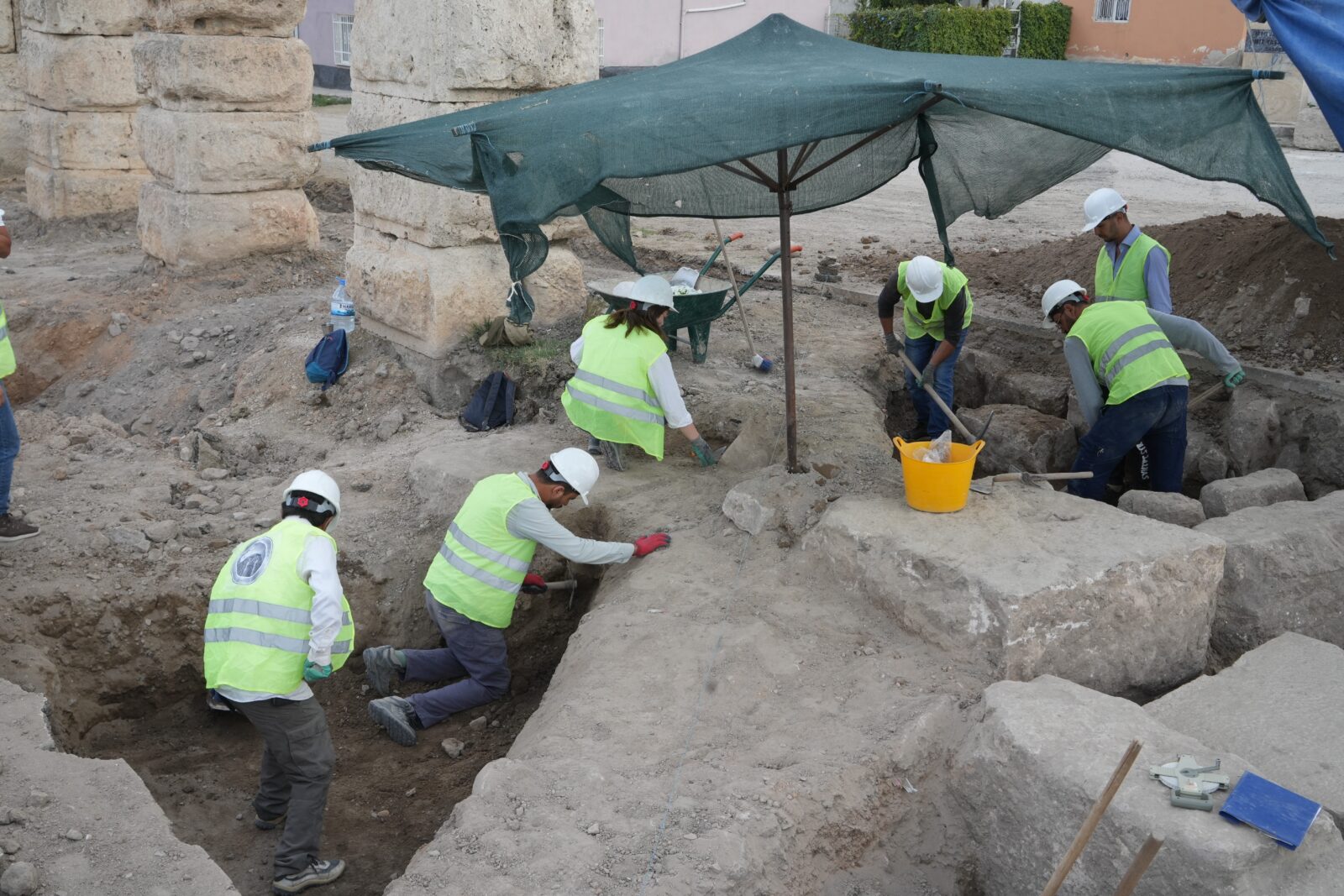
Restoration and future tourism plans
Doganay further stated that the goal is to restore the ancient city to its original splendor, “Our mission is to completely remove the layers of flood sediment, exposing the original Hellenistic walls in their full grandeur. Tyana is one of Central Anatolia’s best-preserved ancient cities, and we aim to attract more visitors, increasing current annual visitor numbers from 110,000 to over a million. Excavations, as part of the ‘Legacy for the Future’ project, will continue throughout the winter, weather permitting.”
The ongoing excavations at Tyana are set to unveil the impressive aqueducts that have remained hidden for centuries. As restoration efforts progress, this ancient site aims to become a significant cultural attraction in Central Anatolia, with hopes to boost visitor numbers substantially. The dedication to preserving and promoting Türkiye’s rich historical heritage highlights the importance of these archaeological endeavors.
